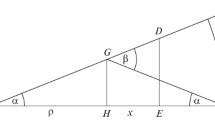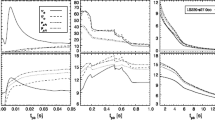Abstract
Cosmological data are reviewed questioning whether the universe may be open and dominated by neutrinos and gravitons rather than by baryons. The thermal history of the Lepton Era is investigated incorporating the effects of neutral currents, additional neutrinos, and a small neutrino mass. In the canonical version of Big Bang cosmology (equal numbers of neutrinos and antineutrinos), the neutrino number and energy density is, like that of photons, gravitationally insignificant unless the neutrino has a small mass (∼10 eV). The neutrino sea can be cosmologically significant if it is degenerate (so that the net leptonic or muonic charge is nonzero) with∼7×10 5 neutrinos (or antineutrinos) per cm.3 This density homogeneously spread out is still so low that even the most energetic cosmic ray protons will not be stopped, even if neutral currents exist with the usual weak strength. If these degenerate neutrinos have a small mass (∼0.5 eV), they will condense into degenerate neutrino superstars of the size and mass of galactic clusters. If neutral currents make the (ev) (ev) coupling five times greater than what it is in V — A theory, nucleosynthesis commences a little earlier than conventionally assumed. This increases the cosmological He4 abundance predicted only slightly from Y= 0.27 to Y= 0.29. An appendix reviews the effect of neutral currents on neutrino processes in stars.
Similar content being viewed by others
References
de Graaf, T. (1971).Proceedings of the Cortina Meeting on Astrophysical Aspects of the Weak Interactions, (Roma); also (1972)in Proceedings 1972 Conference on Neutrinos (Technoinform, Budapest).
Some general references on cosmology are Peebles, J. (1971).Physical Cosmology, (Princeton University Press, Princeton, New Jersey) and Weinberg S. (1972).Gravitation and Cosmology, (Wiley, New York).
Sandage, A. (1972). Hale Observatories Report (1973).Ap. J.,183.
Oort, J. (1958). inLa Structure et l'évolution de l'universe (Brussels).
Ostriker, J. P., and Peebles, P. J. E. (1973).Ap. J.,186, 467.
Tinsley, B. (1972).Ap. J.,178, 319.
Schvartzman, V. F. (1969).Sov. Phys. JETP Lett.,9, 184; Sunyaev, R. A., and Zeldo-vich, Ya. B. (1969).Comm. Astrophys. Space Sci.,1, 159.
Fowler, W. A. (1971). inProceedings of the Cortina Meeting on Astrophysical Aspects of the Weak Interactions (Roma).
Cowsik, R., and McLelland, J. (1972).Phys. Rev. Lett.,29, 609.
Weinberg, S. (1962).Phys. Rev.,128, 1457.
Wagoner, R. V., Fowler, W. A., and Hoyle, F. (1967).Ap. J. 148, 3.
Cowsik, R., and McClelland, J. (1973).Ap. J.,180, 7.
Marx, G., and Szalay, A. S. (1972). inTopical Seminar on Weak Interactions, (Trieste), IO/73/71.
Markov, M. A. (1964).Phys. Lett.,10, 122.
Rood, H. J., Page, T. L., Kintner, E. C., and King, I. R. (1972).Ap. J.,175, 627.
Freedman, D. Z. (1974).Phys. Rev. D,9, 1389.
Dicus, D. (1972).Phys. Rev. D,6, 941.
Author information
Authors and Affiliations
Additional information
Supported in part by the U.S.A.E.C.
Rights and permissions
About this article
Cite this article
Bludman, S.A. Neutrino cosmology. Gen Relat Gravit 7, 569–582 (1976). https://doi.org/10.1007/BF00763406
Received:
Issue Date:
DOI: https://doi.org/10.1007/BF00763406




